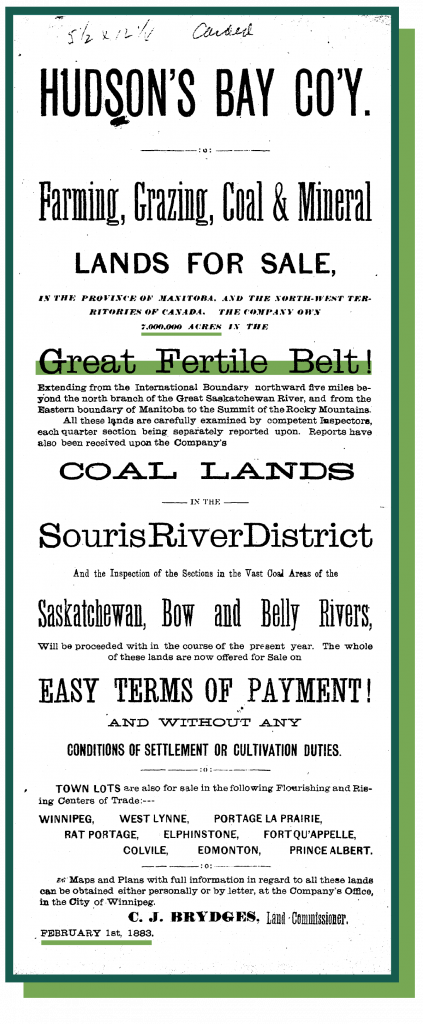SPECIAL FEATURE
Corporate Colonialism
Private capital has always been deeply interlaced with colonial governance.
With the sale of Rupert’s Land, for example, the Hudson’s Bay Company and CN Rail received millions in dollars and acres of land from the Crown as well as the freedom to leverage these assets and create more wealth over time.
At the same time, treaties — interpreted by the Crown as “land deals” — limited communities’ access to land. For instance, instead of receiving a lump sum payment (or capital), treaty terms were outlined as annuities, rations, and parcels of land that would be distributed per person or per family. The annuities system also limited First Nations’ abilities to save, accrue or invest money promised in these agreements.
Banking on the Crown’s duplicity, companies were able to exploit this unfair distribution of land and resources, leading to the accumulation of intergenerational wealth at the expense of First Nations.

Hudson’s Bay Company Advertisement to Settlers, February 1, 1883.
The Company Own 7,000,000 acres in the Great Fertile Belt!
In reality, the majority of this land was not acquired by the company until 1924.

